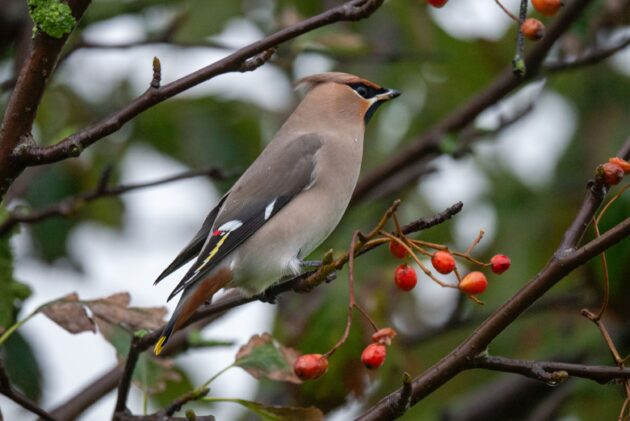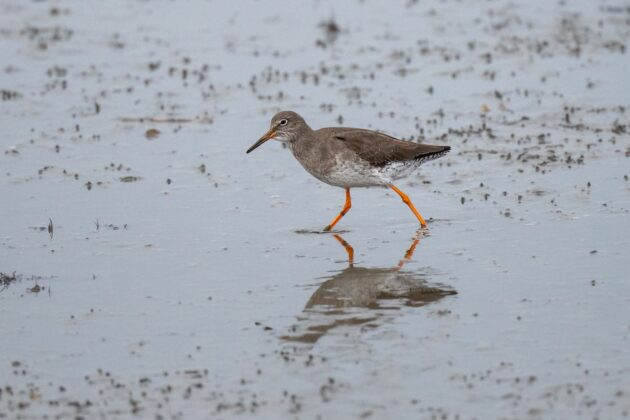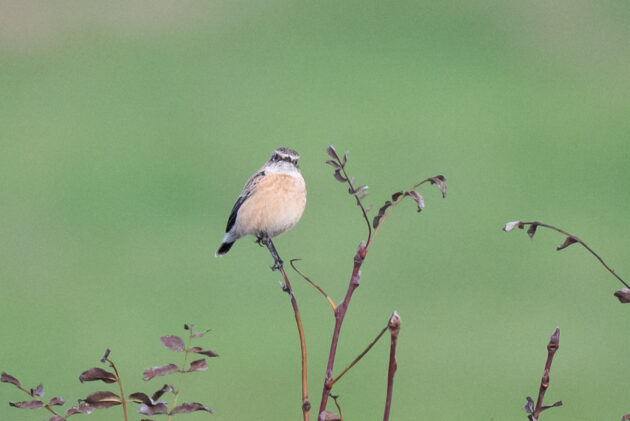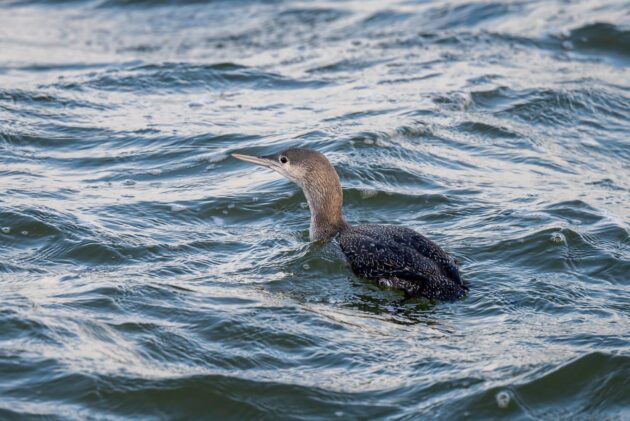The Dutch Island of Texel is well-known amongst European birders due to the exciting number and quality of birds it attracts during spring and autumn migration times. Although not as exciting as Helgoland, which I covered here recently, Texel is an excellent location in its own right. I spent three full days on Texel in late October, which was just about enough to cover this surprisingly large island.
Arriving at the hostel I stayed at in the afternoon, I dropped off my luggage and headed to a site where a Pallas’s Leaf Warbler was seen earlier that day. A vagrant Isabelline Wheatear was present on the island the day before I arrived, so I felt that I at least deserved the warbler (another Isabelline Wheatear was found a few days after I left Texel, so they are clearly messing with me). Just as I left the site after a long search, the secretive but active Pallas’s Leaf-Warbler appeared in the reeds, showing off its beautiful facial markings and bright rump – perfect start of the trip!
On my first full day I explored the northern part of the Island and was particularly happy to find a group of Bearded Reedlings – another lifer (perhaps mildly embarrassing for someone who’s been birding for as long as long as I have). As is sometimes the case with lifers, I saw more Bearded Reedlings at a different site the following day. Clearly this is just because you happen to be at a suitable place and time, but it feels more like they want to mock your initial excitement by showing you that they’re everywhere and you just failed to find them.
A few Bohemian Waxwings were also a great addition to my life-list and a long-awaited bird. They were feeding in a small tree in the village of De Koog and were very approachable.

The morning of my second day was partly devoted to a Long-tailed Duck in the Mokbaai at the island’s southern tip. I’m was very happy with this sighting, but noticed that these birds never seem to be males in their attractive non-breeding plumage, the main image you recall from the bird guides. I also saw Eurasian Woodcock, Northern Goshawk, and Hen Harrier in the vicinity. Scanning through a flock of European Golden-Plovers in the evening near de Coog was worthwhile as I picked out a Eurasian Dotterel, surprisingly late in the year for this passage migrant.
On my final day, I spent some time watching waders from the small pier at de Cocksdorp. Common Ringed Plover, Bar-tailed Godwit, Black-tailed Godwit, Common Redshank, Eurasian Curlew, Red Knot, Dunlin, and Sanderling were feeding happily on the mudflats, while Green Sandpiper and Spotted Redshank were added to the wader tally on a flooded field.

A Siberian Stonechat was found by the lighthouse on my second day. It was only present for an hour so I systematically checked every stonechat I came across carefully, but they all remained European Stonechats. This bird interested me partly because of the confusing taxonomy and identifaction of stonechats. A few days after I left Heligoland a month earlier, a stonechat was observed that could only be identified as Siberian (Saxicola maurus) or Amur/ Stejneger’s (S. stejnegeri), and thus for now was just regarded as an “Eastern Stonechat” (both species lumped). I never before looked into this difference, but turns out that this difficulty occurs quite frequently, especially with vagrants. A fellow volunteer from my time in Helgoland sent me a study reviewing differences of S. maurus and S. stejnegeri, which describes the differences very well (Hellström & Waern, 2023 – published in British Birds, unfortunately only available with a subscription). The rump and uppertail-coverts color is apparently the most reliable indicator, with S. stejnegeri generally have a warmer tone.
You’re probably wondering that I had better seen the beast if I’m making such a fuss about them here! Fortunately, the bird was relocated the following day nearby to where I was birding anyway so I stopped by an obtained good views of the Siberian Stonechat, during pretty much the only half hour of sunshine I had over the three days. It was quite a distinctive individual, particularly its pale rump.

Overall, I also very much enjoyed the atmosphere of migration during my stay. Large numbers of Greylag Goose, Greater White-fronted Goose, Brent Goose, and Barnacle Goose dotted the fields, and many more vocal flocks flew low over the flat landscape, making for atmospheric moments. Groups of up to 100 thrushes, mainly Fieldfares and Redwings, passed through and foraged in the bushes as well.
I also saw a few Snow Buntings on the beach near the lighthouse. I was scouring the area for Lapland Bunting in particular, but was not lucky and also did not have any individuals flying overhead, or at least none giving their distinctive calls that often indicate their presence. However, I was rewarded with two Red-throated Divers feeding right at the beach, and a probable but too brief Black-throated Diver further out at sea.

October is a great time to visit Texel, and my trip made this evident to me again as I saw a few lifers I did not expect. I was very satisfied with my sightings and with the chance to explore the island more thoroughly and at a more relaxed pace than I could on my previous day-trips.
Source link


